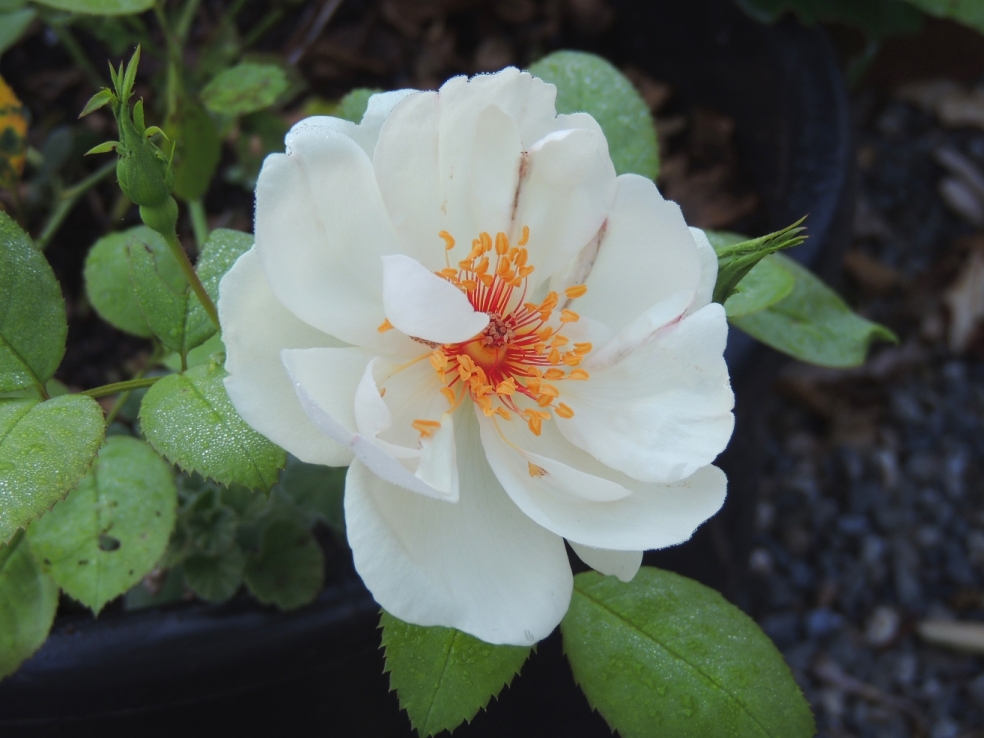
Feeling rather grumpy about my grumpiness about the scorched earth situation- and also chastened by kind comments from Australian and Californian readers basically saying that at least I can count on the fact that it will rain again…sometime. I think that, even though I completely want to create the watering-free garden that I think we all have to embrace- I am still disturbed by the implications of my self-inflicted policy. It all goes to show that changing our aesthetic to fully embrace sustainability is really hard and cuts to the core somehow.
Having said all of that, I am also aware that I don’t have (yet) to be an utter purist. I can and should do what I can to garden as close to the edge of sustainability as possible. But it’s ok to save myself with some watering as the edge moves away from me. Watering is not to be despised. So, I am doing some selective watering over the next few days. I have allowed myself off the hook. But, from the above, you can see that it has been a bit of a moral tussle.
So, to invoke cheeriness (and maybe rain!), here is what is still looking good without any help from me- though these are isolated spots in amongst a sea of brown.
I actually dug up Rosa ‘Jacqueline du Pre’ over a month ago and stuck her back into a pot, as she was looking nigh unto death. So with a pot-watering regime, she has begun flowering again. She is really ‘worth it’ to ape L’Oreal.
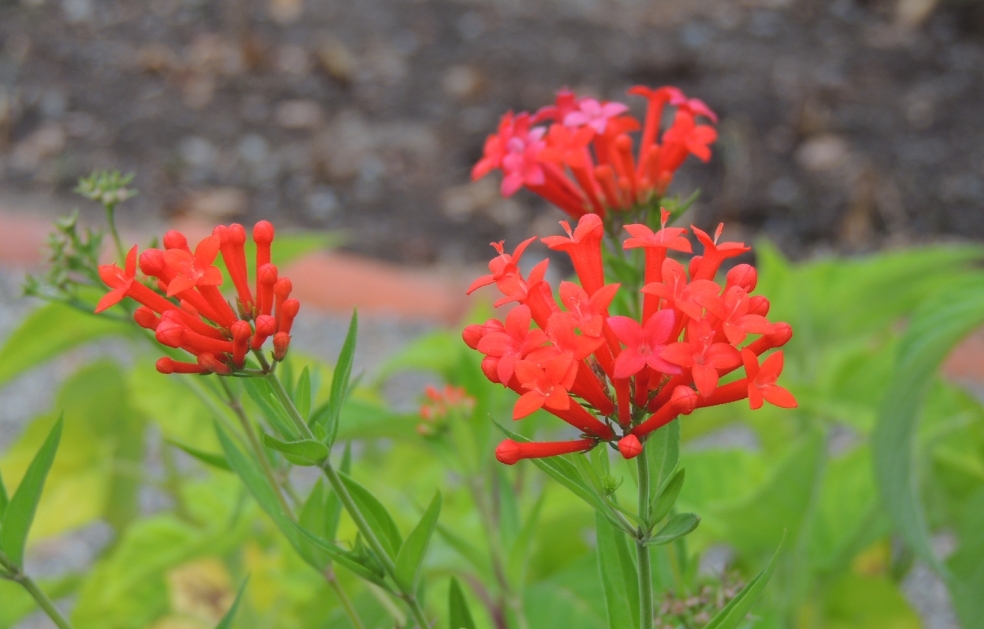
Staying with the pots for a moment, Bouvardia ternifolia is looking very very happy- a true pillar-box red, tender, but can be tucked away dry in a protected spot in the winter, watered copiously in the spring, and up she comes.
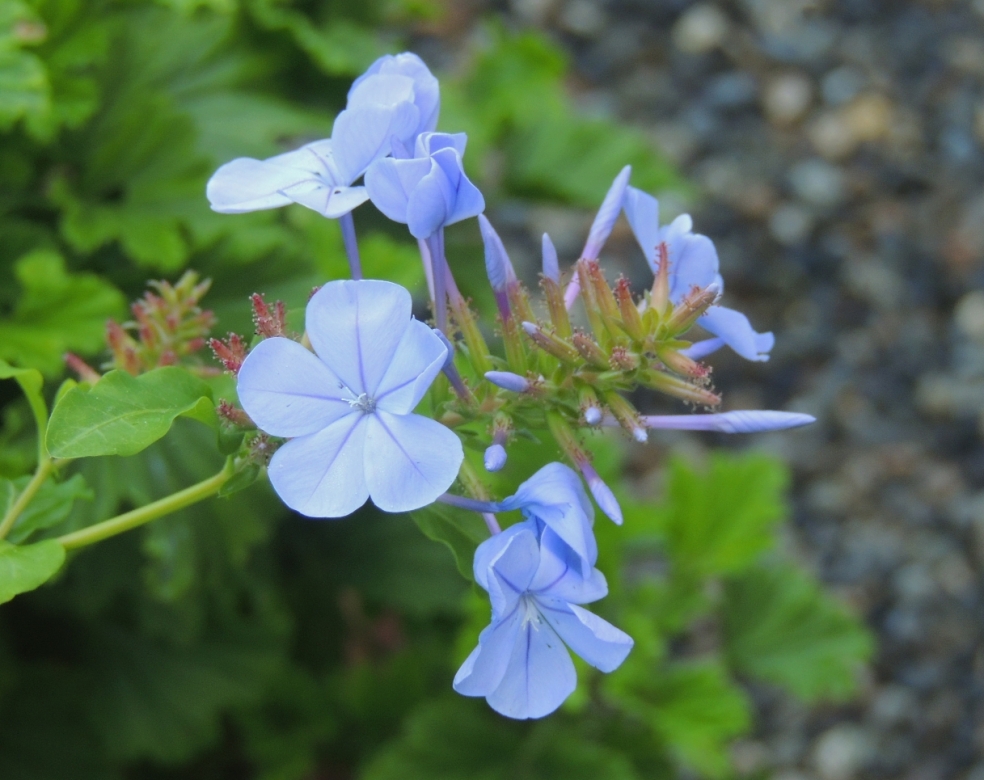
In a pot, and in semi-shade, Plumbago auriculata has just begun flowering. On the tender side, I mistakenly left the pot out during the winter, and was pretty sure that I had killed the plant. But, it’s always worth hanging on- and back she came in June. Very late to get started, but looking absolutely fine.
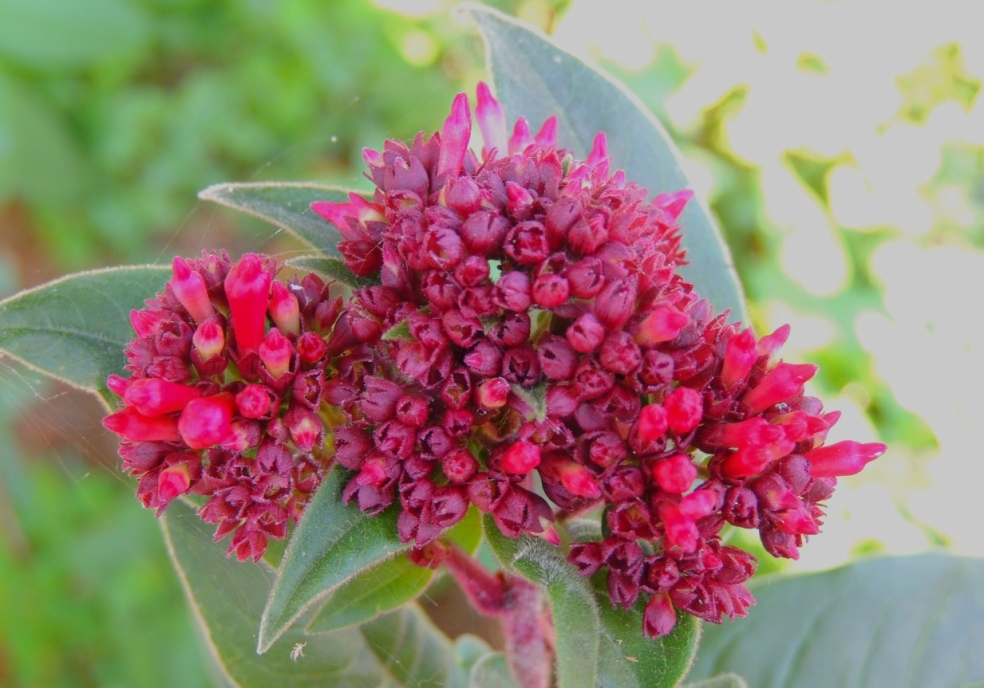
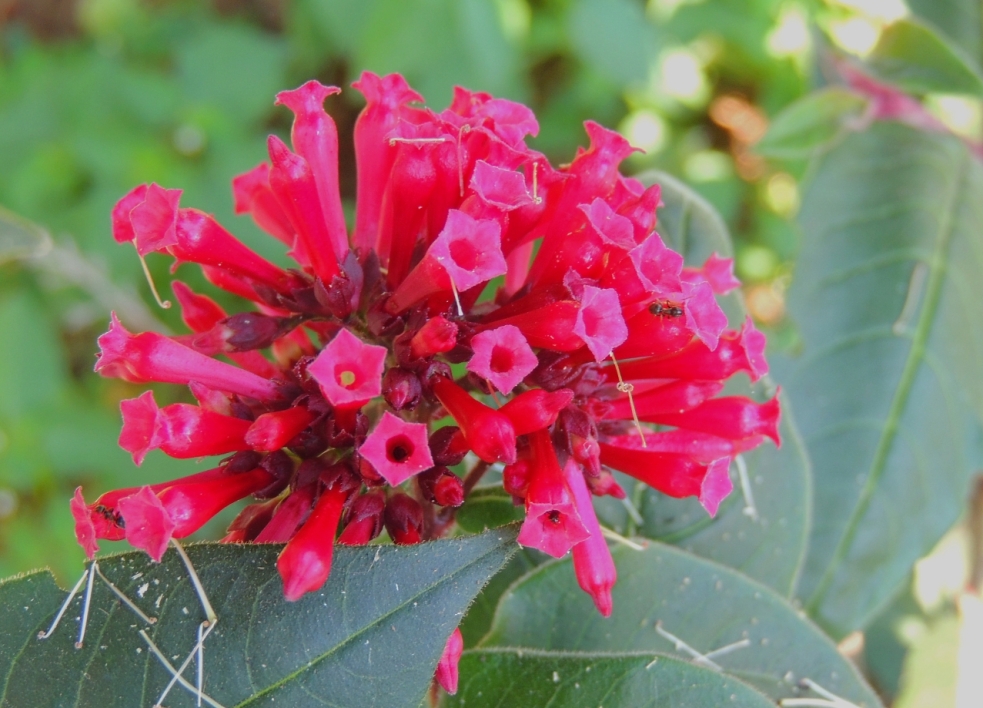
Cestrum elegans rubrum was a bargain-basement shrub I bought last winter. A little on the tender side, I was feeling pretty smug about it until we hit the 2 weeks of -10C. The shrub collapsed. I thought it was time for an obituary notice, again. But, two months later, signs of growth could be seen, and though a little shorter with the heat, I think that next year she will be bouncing back at 1m plus all round. And clearly tougher than I thought. I love those surprises.
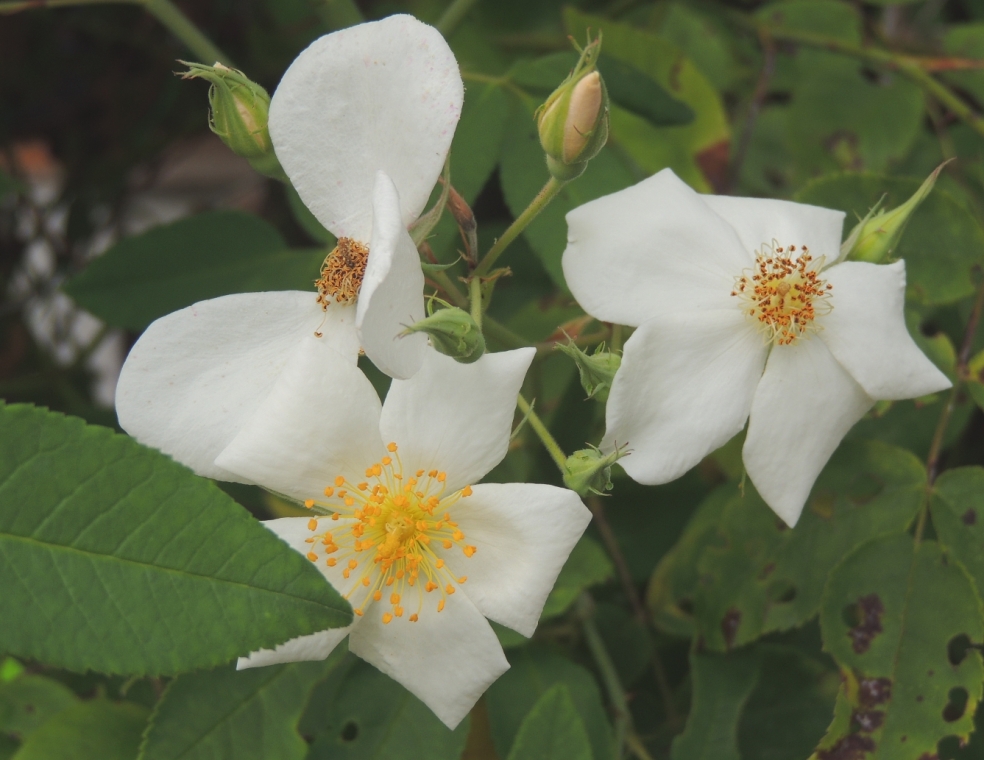
I bought Rosa moschata from Olivier Filippi‘s nursery in the Languedoc, maybe 5 years ago. He is a serious dry-gardening expert and all his plants are worth trying especially with his advice. I over-risked the dryness it would tolerate, and had to do yet another emergency transplant into a pot. Note to self: This is the edge of sustainability looking at me, again. Out of the pot, and in a new home 2 years ago against the central pillar of the outdoor barn, Rosa moschata is reaching for the roof, and is on her second flowering. Only a dozen buds open, but the scent fills the barn- a deep old-rose scent, gorgeous.

Last year’s baby Abutilon ebay purchase is in the ground, only about 20 cms high, but has already flowered non-stop since late May. Abutilons fold their leaves down like wings when they are a bit heat-stressed- but they carry on anyway. Real troopers.
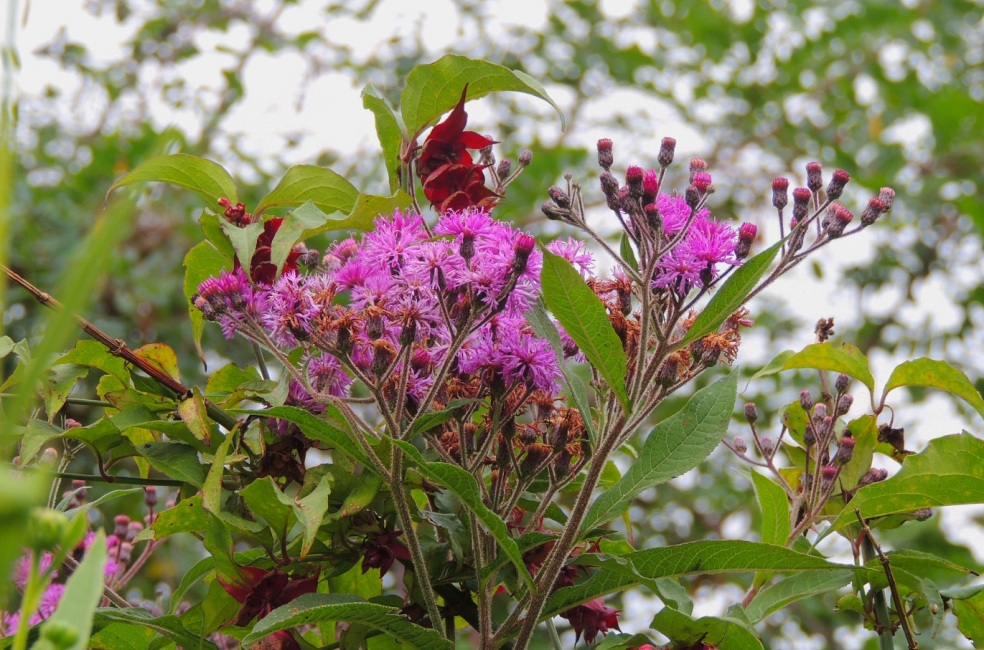
The Vernonia nearest the canal is the only one still flowering, wrapped in the arms of Leycesteria formosa– the crimson meets the purple.
And for sheer mystery and magic, this new-to-me Pennisetum, Pennisetum alopecuroides ‘Japonicum’ is hard to beat, close-up. Note: In France, this plant is known as ‘Japonicum’- whilst in the UK, it is Pennisetum alopecuroides ‘Foxtrot’.
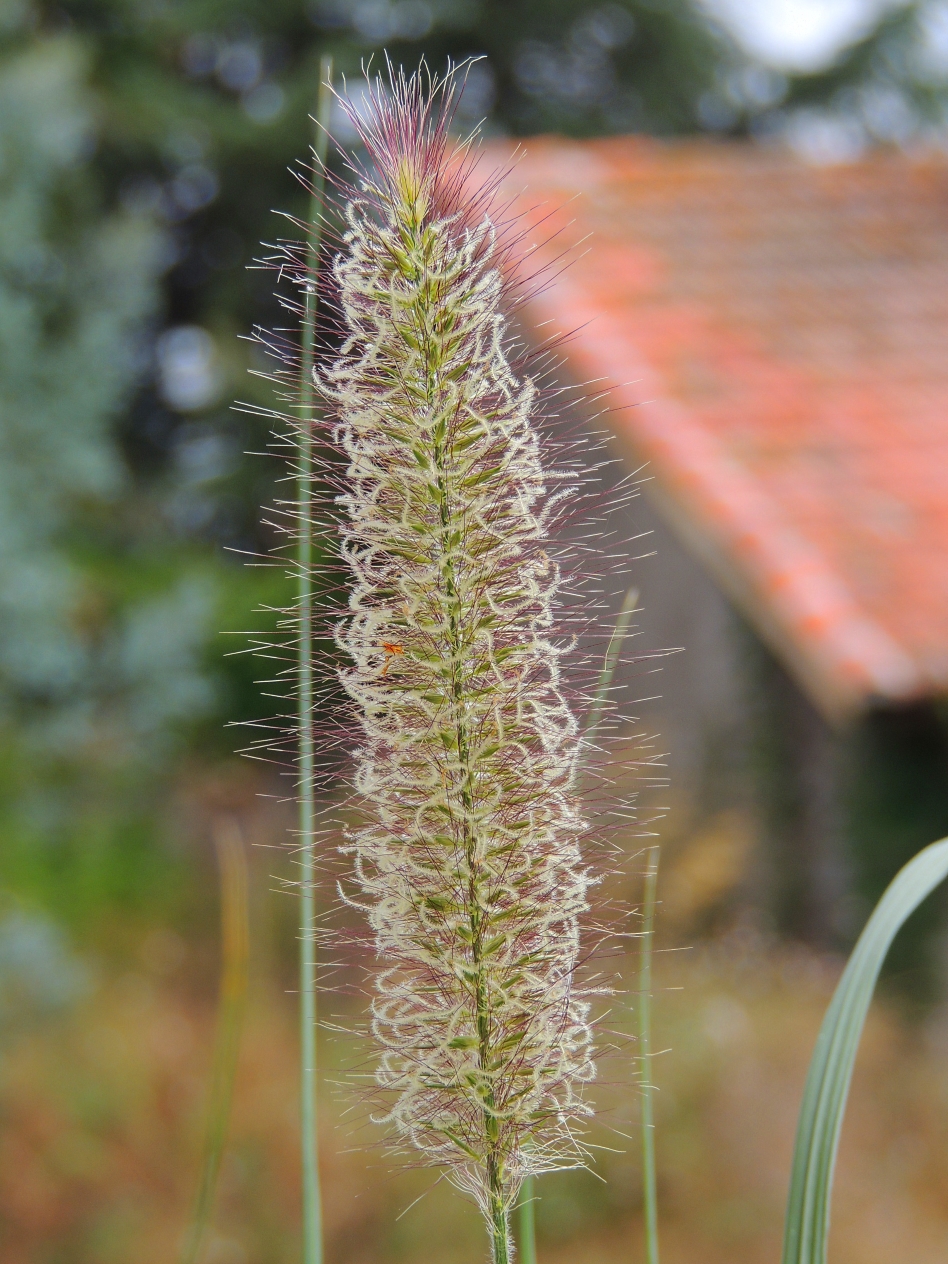
Maybe I like the danger of the edge….
































